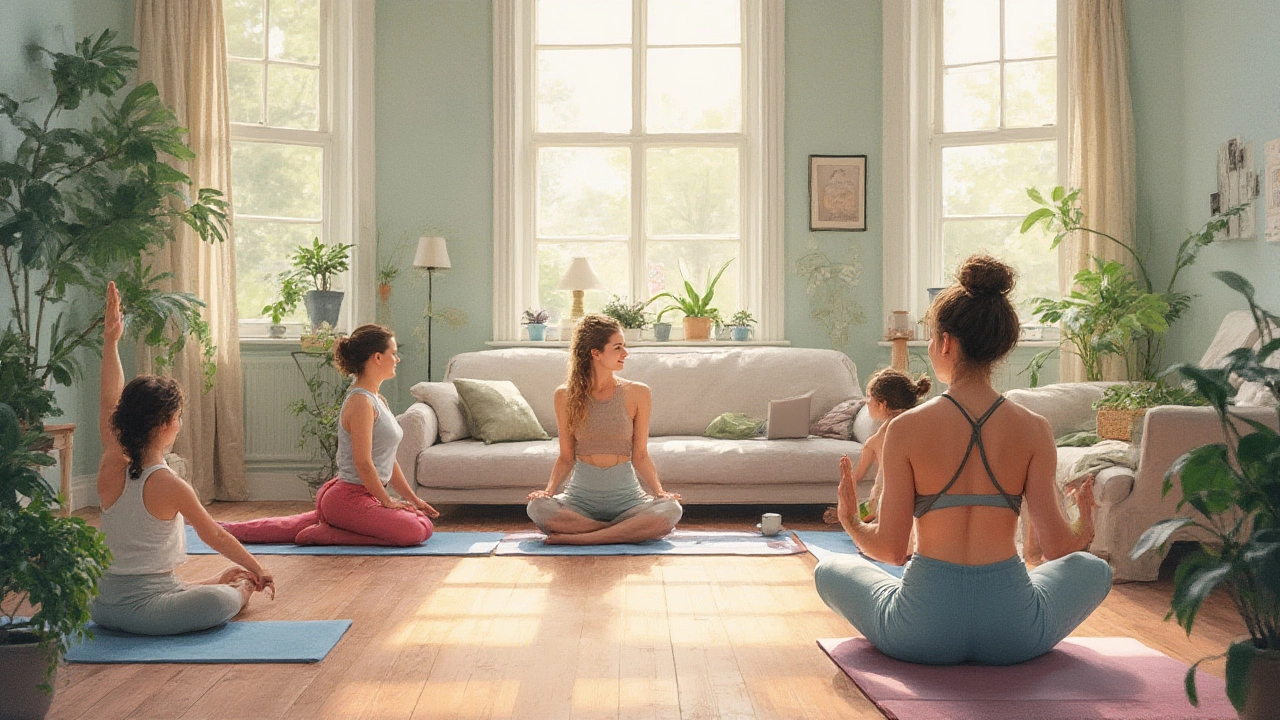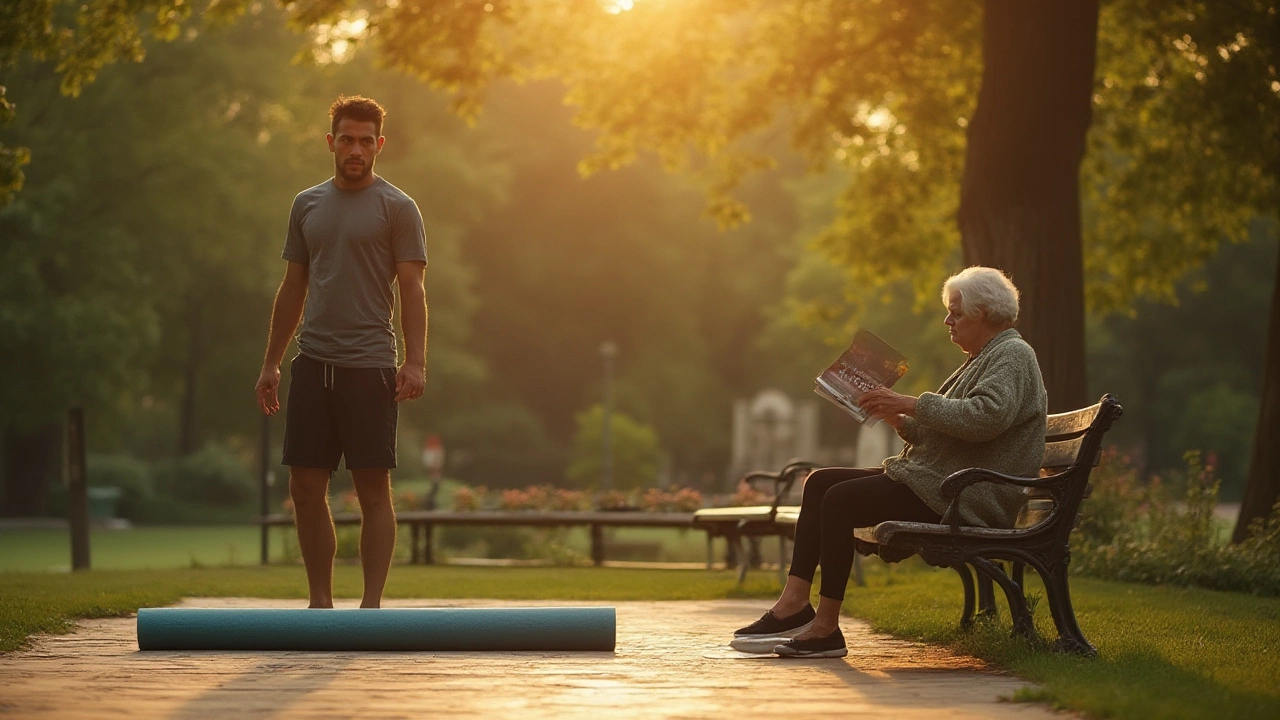
Fitness July 6, 2025
How Often Should You Practice Yoga Each Week? Expert Tips & Realistic Advice
Ever look at someone balancing in tree pose and think, “Am I meant to do yoga every day?” There’s a ton of opinions online—some swear by morning practice at sunrise while others pop into a class just once a week and claim to feel great. The truth is, there’s no one answer that fits all. The magic comes from finding what works for your body, schedule, and goals. Skip the guesswork: let’s unpack how often you actually need to roll out your mat to feel and see results you care about.
What Science and Teachers Say About Yoga Frequency
If you dig into research and ask experienced instructors, most will tell you consistency beats intensity. According to a survey by Yoga Alliance and Yoga Journal back in 2016 (they checked in with over 3,700 yogis), people who practiced three times a week or more reported the biggest improvements in stress, strength, and flexibility. But plenty also said that even one or two sessions a week made a noticeable difference. The takeaway: frequency does matter, but so does what you call “regular.”
One fact that surprises most beginners: your body and brain start changing after just a handful of sessions. A 2015 Harvard study tracked beginners and found that after eight weeks of twice-a-week yoga, folks felt calmer, slept better, and coped better with work stress. You don’t have to squeeze in daily sessions to feel benefits. Just don’t expect to touch your toes after trying yoga twice in January and then forgetting about it until June.
Most teachers in the UK—even at the bigger Bristol studios—recommend starting with two-to-three classes a week. If you’re aiming for increased flexibility, a light daily stretch at home (even ten minutes) works wonders over time. If you’re working toward serious fitness or strength goals, mixing two strong yoga classes a week with other forms of exercise makes your routine balanced and sustainable. Nobody wants to burn out after an ambitious first week.
Check out the real numbers below. These stats, gathered from UK-based Mindful Yoga in 2024, reflect a mix of online and in-person students who stuck to a routine for at least three months:
| Sessions Per Week | Reported Flexibility Increase (%) | Stress Reduction (%) | Recall Improved Sleep (%) |
|---|---|---|---|
| 1 | 33 | 29 | 21 |
| 2-3 | 56 | 64 | 55 |
| 4+ | 72 | 73 | 65 |
Pretty obvious, right? The higher the frequency, the bigger the rewards, especially for stress levels and sleep. Still, the jump from zero to once a week is more dramatic than from three to five times. That’s encouraging if you can’t fit much yoga into your life right now. Even small steps add up.
Working adults and parents often worry they’ll never match the Insta-yogi with a seven-day-a-week routine. The truth is, your body needs rest too, and variety is key. Recovery days matter if you’re doing power vinyasa or any yoga style that gets your heart pounding or leaves you sweating. Stretch-focused or restorative classes? Those are gentle enough to do daily, and some teachers actually recommend a nightly wind-down flow for busy brains.

Matching Your Yoga Routine to Your Goals
Your perfect yoga schedule depends on what you want out of it. Healing an old injury? The NHS recommends gentle, supervised yoga twice a week alongside other rehab exercises. Chasing a loose hamstring or just unsticking your back after long hours at your desk? You’ll get the most progress from consistent, manageable sessions instead of cramming all your stretches into a Saturday morning marathon.
- Strength and Toning: 3-4 times per week is where noticeable muscle changes kick in, especially if you mix up flowing yoga with strength-building postures.
- Stress and Sleep: Even beginners feel calmer and sleep better with just one or two sessions per week. Add a few minutes of simple, quiet movements or deep breathing on busy days to keep those benefits going.
- General Health: The NHS and British Heart Foundation both put yoga in the “something is better than nothing” box. Even a single weekly class supports flexibility, balance, and mental wellness, especially for older adults.
- Weight Loss: The science here is mixed. A gentle class alone probably won’t replace cardio, but dynamic or power yoga three times a week can support a healthy weight, especially when paired with other exercise and a sensible diet.
Listen to your own energy. If you walk out of a class wiped for the rest of the day, that’s a sign you might be doing too much or need a gentler session. Consistency comes easiest when you mix things up. My mate Emma, a Bristol GP who stumbled into yoga during the pandemic, now schedules one live class and tops up with two short YouTube flows a week. No burnout, no guilt about missing a day, and her back pain is history.
It’s smarter to start small and work up rather than aim too high and fizzle. Noticing boredom? Add new poses, try a new teacher, or invite a mate for an open-air session in one of Bristol’s parks. Progress comes when you’re actually enjoying what you’re doing, not just ticking boxes out of obligation.
One underrated trick: set aside a consistent slot—even if it’s only fifteen minutes every other evening. Block it on your calendar like an appointment. Having structure helps fight the “maybe later” trap, especially if you’re prone to procrastination or prone to letting Netflix win the battle for your attention.

Real-World Tips to Build (and Stick With) a Yoga Habit
Building any new habit feels hard until it doesn’t. The biggest obstacle folks in Bristol mention isn’t motivation—it’s time. If you’re struggling to fit yoga in, here are some tactics my friends, clients, and local teachers use that actually work.
- Short Is Good: If you can’t spare an hour, do ten or twenty minutes. There’s no magic minimum. Yoga With Adriene’s short online sessions racked up millions of fans for a reason—they’re realistic for real people.
- Pick a Trigger: Stack yoga onto something you already do. Right after the kids go to bed? Perfect. While the kettle’s boiling? Sure, why not.
- Lose the All-or-Nothing Mindset: Missing a planned session doesn’t mean you’ve failed. Every time you get on your mat counts, whether it’s a full hour or a single stretch before bed.
- Be Social About It: Join a class with a friend, or use apps where you tick off sessions together. Social support makes sticking with things way more likely. In Bristol, Yoga on the Downs and lunchtime yoga clubs in city offices have exploded since 2023. People love accountability.
- Track Progress—But Not Just with Photos: Sure, some people love the before-and-after shots, but keeping a simple note of how you feel afterwards tells a better story. You’ll see improvements in mood or pain way before flexibility shows up.
- Listen to Your Body: Didn’t sleep well, or coming down with something? Swap a tough class for a gentle one. Yoga’s adaptable—so should your plan be.
- Mix It Up: Some days you’ll crave calm. Other days, you might want a challenge. Try hatha one day and a sweaty vinyasa the next. Or book in a restorative yin session when you’re burnt out.
If you’re aiming for the most important yoga frequency sweet spot, two to three times a week is a strong starting point. Stick at it for a couple of months and you’ll start to forget when your back last hurt, your hips feel less creaky, and even your mates might notice you’re less grumpy. But never judge your practice by Instagram. Progress isn’t about how often you post crow pose; it’s about what changes in your life off the mat.
You don’t need fancy leggings, incense, or a home studio. My mate Ravi does ten minutes of sun salutes next to his compost bin at the allotment. Alice, who works in the city centre, keeps a mat under her desk for after-lunch stretches. If it fits your life, you’ll keep doing it—and that’s when yoga’s magic happens for real.




